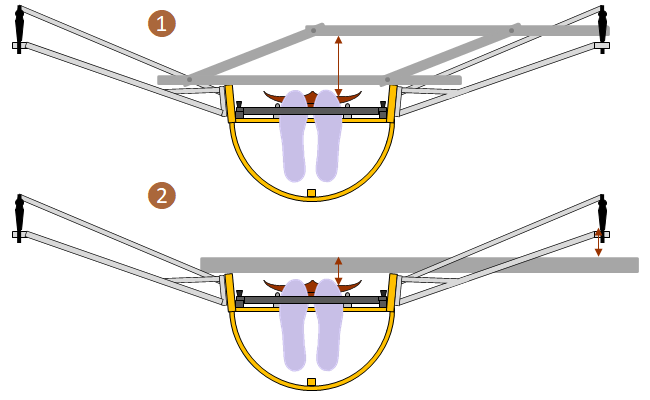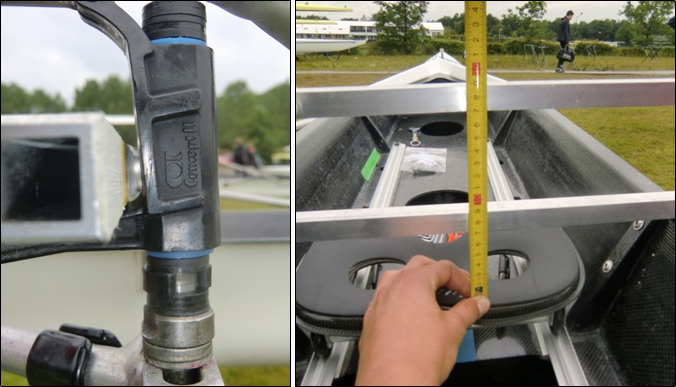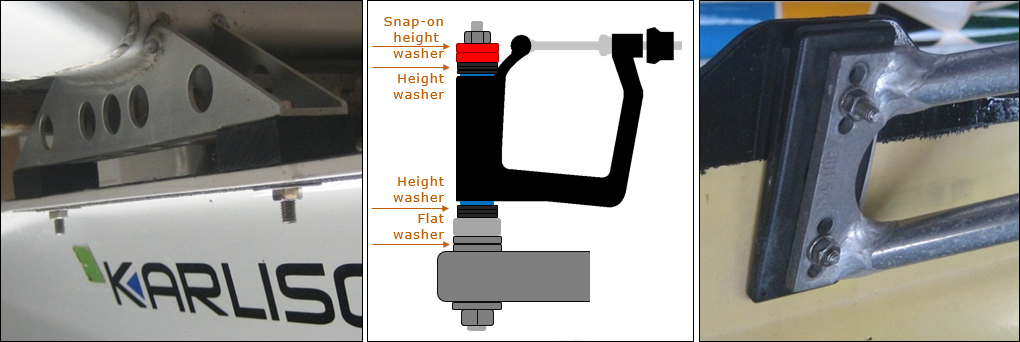
|
Oarlock height
|
| Concept: |
The difference in height between the support surface of the oarlock (the horizontal part on which the oar rests), measured 0.5 cm from the abutment surface of the oarlock (the vertical part the oar is pressing against), and the deepest point on the front of the seat when it touches the front stops |
| Sizes: |
Measured in centimeters: 13cm–18cm. In sculling, the starboard side oarlock is placed up to 2 cm higher then the port side oarlock to create more space for the hands at the overlapping handles. In sweep rowing, the stroke and starboard side oarlocks are always on the same height. |
| Effect: |
| + |
The oar is a bit harder to draw, rowing with waves becomes easier. |
| – |
The oar draws more easily, rowing with waves becomes more difficult. |
|
| Measure: |
Using a level bar or oarlock height gauge, as outlined below.
Attention: On older or poorly built boats, the tracks may not run parallel to the gunwales of the boat. In this case, one of the gunwales must be raised on one side with the aid of a heightening slat. This parallelism can be determined by placing a bar on both gunwales and measuring the distance to the tracks with the aid of a tape measure. in this way the parallelism of the tracks and the edge can be determined and the height of the possibly necessary raising slat can thus also be determined. |

Using an oarlock height gauge or level bar.

The correct place for the bar on the oarlock and measuring the oarlock height.
| Adjust: |
There are a number of ways to set the oarlock height:
| 1. |
By moving the (black/snap-on) height washers on either side of the oarlock from bottom to top or vice-versa. |
| 2. |
By moving the aluminium washers on top or below the oarlock pin holder from the rigger. |
| 3. |
Wing riggers have the option to mount adjusting washers or adjusting plates under the wing rigger. |
| 4. |
Many classic riggers have adjustment holes that allow the rigger to be mounted at several heights. |
| 5. |
Place a lower or higher seat or a height-adjustable seat. |
| 6. |
Finally, with classic riggers there is the possibility to change the height of the rigger using a rigger wedge. Using wedges with different angles changes the oarlock height accordingly. If the the wedge is placed with the fat side down, the rigger is heightened. If the wedge is placed the other way around, it will lower the rigger. The disadvantage of this method is that the outer angle of the oarlock pin (and therefore that of the oarlock) will also change. |
|

The different ways to adjust the oarlock height in a row
 |
Overshoot (sweep rowing) |
 |
Minimum oarlock height |
This article was translated automatically and is provided to you for free. You are most welcome to improve it!
















